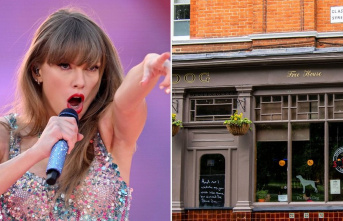She was born in the rain forests of the Congo and lived in the Frankfurt Zoo in 1959 - now the bonobo female Margrit has died at the age of probably around 70 years. This was announced by a zoo spokeswoman on Tuesday. According to the zoo, she was probably the oldest representative of her species and probably even the oldest great ape of the population alive today.
The life of the longtime matriarch of the bonobo group ended peacefully and quickly, it said. Only two days earlier, the nurses noticed slight changes. Margit was a little less active and no longer ate her usual amounts, it was said. "She showed no signs of pain."
"She died within minutes under observation by the care team while younger female Hannah sat by her side," said zoo director Christina Geiger. Margrit had an unusually long life and was popular and respected among her peers. "Now it was time for her to go."
The Frankfurt Zoo owed Margrit the world's first breeding of bonobos in 1962. She had offspring a total of seven times. Around 80 of their offspring are currently living in 17 zoos, including one in Frankfurt.
Great apes are kept in 19 zoos worldwide, 17 of which have descendants of Margrit. Some great-grandchildren of the fifth generation still live in Frankfurt.
"Margrit was a personality, friendly, cooperative and with a mischievous spirit," said zoo director Christina Geiger. Her death leaves a void. She died within a few minutes under the watch of the nurses.
According to the Frankfurt Zoo, animals that were born in the wild only rarely live in zoos today. The 1975 Washington Convention on International Trade in Endangered Species prohibited commercial trade in endangered species.
The populations in the zoos are maintained with breeding programs. These can survive without importing wild-caught species and with sufficient genetic diversity.











